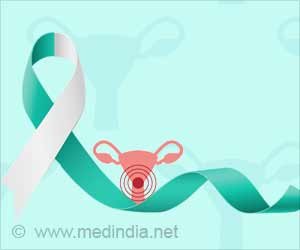Active Scrutiny of Cervical Lesions Fuels Long-Term Cervical Cancer Risk

CIN is not cancer, but abnormal cells can develop into cancer if left untreated. For many years, CIN2 has been the threshold for treatment to remove abnormal cells. However, several studies have shown that
As a result, many countries have implemented active surveillance as an option for some women with CIN2, but it’s not clear whether this approach is associated with increased risk of cervical cancer in the longer term.
Advertisement
To address this, researchers in Denmark set out to assess the long term risk of cervical cancer in women having active surveillance for CIN2 compared with immediate treatment.
Active surveillance has been an option for all women of reproductive age in Denmark since 2013 and in some Danish regions since 1995. It involves regular examinations and tests for two years after diagnosis to see if the abnormal cells develop further.
The study included 27,524 women with CIN2 diagnosed in 1998-2020 and aged 18-40 years at diagnosis. Of these, 12,483 (45%) had active surveillance and 15,041 (55%) had immediate treatment with large loop excision of the transformation zone (LLETZ) to remove lesions.
Women were followed from diagnosis until cervical cancer, hysterectomy, emigration, death, or 31 December 2020, whichever came first.
After taking account of various factors including age, calendar year, and region of residence, the researchers identified 104 cases of cervical cancer – 56 (54%) in the active surveillance group and 48 (46%) in the LLETZ group.
The cumulative risk of cervical cancer was similar across the two groups during the two-year active surveillance period (0.56% in the active surveillance group and 0.37% in the LLETZ group).
Thereafter, the risk increased in the active surveillance group. After 20 years, the risk was about fourfold higher in the active surveillance group (2.65%), whereas it remained relatively stable in the LLETZ group (0.76%). The increased risk was mainly seen among women aged 30 or older.
One explanation for the higher long term risk of cervical cancer in women having active surveillance could be that the underlying HPV infection that causes cervical cancer remains dormant in the cells with subsequent risk of reactivation during periods of weakened immune or increasing age, say the researchers.
This is an observational study, so can’t establish the cause, and the researchers acknowledge that variation in CIN2 diagnosis and a lack of information on several factors including socioeconomic status and number of biopsies in the active surveillance group may have influenced their results.
Nevertheless, this was a well designed study that used individual level data from high quality nationwide registries with virtually complete follow-up, suggesting that the findings are robust.
Reference :
- Untreated cervical intraepithelial neoplasia grade 2 and subsequent risk of cervical cancer: population based cohort study – (https://www.bmj.com/content/383/bmj-2023-075925)
Source: Eurekalert
Source link
#Active #Scrutiny #Cervical #Lesions #Fuels #LongTerm #Cervical #Cancer #Risk



